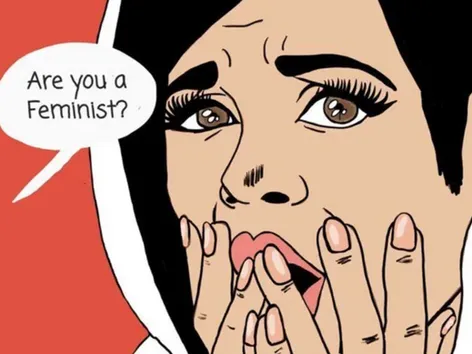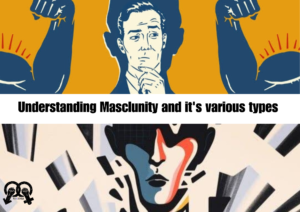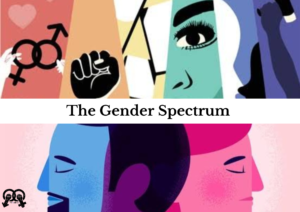People also highlight their experiences of being hurt, betrayed, and backstabbed by other women. Their pain is doubled because they did not expect such behaviour from women.
“I hope you’re not the ‘feminist type’ said the guy reading my M. A Gender Studies Thesis
Are you a feminist who has to conceal your feminist identity to avoid hostility and judgment?
When did being called a feminist become worse than being called a misogynist?
The term ‘Feminism’

“The word ‘feminism’ itself is biased as it only refers to women” claimed my undergraduate history
professor as an introduction to the paper ‘Gender in India’ that she was forced to teach due to the lack of gender studies professors in the department. Betty Cairo in her Tedx Talk is more articulate when she points out that using gendered language deepens differences. She stresses the importance of gender-neutral language in furthering the cause of equality. She claims that the word feminism ‘feels polarising’ and therefore she says that she is an “equalist”.There are a few things to unpack here.
c) Cairo gives the example of a headline that she feels was unnecessarily gendered. The headlineread “Alabama scientist, one of the nation’s few black female physicists breaks ground in Cancer research”. She pointed out that it would be so weird if white male scientists were specificallymentioned in a similar headline and that it would be so much better if neutrality was maintained.
Secondly, Yes, language is gendered and gender-neutral language must be introduced however
this particular example is tone-deaf, to say the least. This is because Cairo is confusing neutrality
with invisibility. The reason the scientist’s race and gender are mentioned is due to the history of
double discrimination (racism and sexism) faced by black women in the U.S. Moreover,
invisibilising Black women’s contribution to all fields of science is a major issue in the history of
the country and in the field of science. So yes, it would be weird if the headline mentioned white,
male physicists because their contributions were never invisibilised in the first place.
Neutrality means nothing if what counts as ‘neutral’ is the dominant.
Cairo’s problem with feminism seems to be rooted in its detection of the relevance of gender in all
interactions, systems, and language but not the actual existence of gender as a discriminatory factor in the same. What Cairo and other ‘Equalists’ like her do not understand is that in order to make gender
irrelevant in the future, it is imperative to constantly detect its overt and covert functioning and effects, and that is precisely what feminism does.
Uncritical Links between Feminism and Women.
Yes, the feminist movement was started by and for women but does the mere existence, opinion, or
actions of women have any direct links to feminism? For example, the show Four more shots please and the film Veere Di Wedding which focuses on women and their friendships are widely criticised for taking feminism “too far” and that “this is not real feminism”. While what constitutes ‘real feminism’ is a discussion for another time, it is interesting to note that none of the characters, directors, or writers neither claim to be feminists nor express any intention to further any feminist cause.
People also highlight their experiences of being hurt, betrayed, and backstabbed by other women. Their pain is doubled because they did not expect such behaviour from women. The overarching assumption that women, by virtue of being women are trustworthy, loving, caring, and nurturing is also rooted in a patriarchal society’s expectation of women* and not in actual reality. So when women’s behaviour deviates from these expectations we find it shocking.
The Youtuber ‘Equalist Aastha’ in her video “Why I’m not a feminist anymore” 1 point out that she
believes in equality and choice, however, she has observed that ‘feminists’ do not actually ‘support’
women who exercise their choices. She cites examples of feminist critiques of the actress Kangana Ranaut (pro-BJP, Islamophobic) vaguely refers to “women who support capitalism” and actors such as
Kareena Kapoor who refuses to call themselves feminist, is an example to highlight what she feels is the opposite of her understanding of feminist claims of ‘supporting women’.
Once again, feminism does not blindly support women because they are women.
Feminist writer, Toril Moi’s work ‘Feminist, Female, Female’ on what constitutes a feminist text would be helpful here. She concludes that any text that is consciously anti-patriarchal in nature constitutes a feminist text. I believe that this logic can be extended to who counts as a feminist too. Therefore anyone, (not just women) who is consciously anti-patriarchal can be called a feminist.
Deepika Bharadwaj, a filmmaker and men’s rights activist’s Instagram page posts numerous videos of women mistreating/assaulting men to highlight the importance of the movement she stands for.
Most women are upper-class women who misbehave with lower-class men such as guards, shopkeepers, and delivery persons. Women are seen as a homogenous category who by virtue of just being women can assault and degrade men and not because they might have privileges associated with their caste and class. This discourse has also left out feminist articulations of how living in a gendered world and patriarchal society harms men. There is a severe dearth of consideration of caste, class, sexuality, and religion as well as the various ways in which power works through various structures and institutions.

“Zyaada ho raha hai” (This is getting too much)
‘Feminism’ and ‘feminists’ are held responsible for inciting women who now want ‘too much’. Too much freedom, too much money, and too much equality, and therefore it is ‘enough’. Social media movements such as ‘Me Too’ are viewed as tactics to falsely accuse men of being predatory, causing men to be cautious of everything they say and do. A narrow understanding of feminism as just ‘equality’ between men and women is what is expected from the feminist movement.
“Feminists are also extremely ungrateful people, who never get satisfied with any improvement in the
condition of women” (Save Indian Family Foundation, 2021)
This belief is utterly problematic as both the effects of patriarchy and the outcomes of feminist struggles are extremely uneven and highly contextual. For example, the discourses on abortion rights in India and the U.S. are very different. While women’s rights over their bodies form the core of the pro-choice movement in the U.S., India’s age-old practice of female foetus infanticide/sex-selective abortion has to be considered in the Indian context.
When asked about the constant portrayal of the female characters in his films (Pyaar ka Punchnama 1,2 and Sonu Ke Titu Ki Sweety) as crafty women waiting to ruin the lives of innocent men, Director Luv Ranjan stated that “After hundreds of years of dominating women, suddenly there is this generation that is raised in a manner by their mothers, telling them that it is nice and right to treat women equally. In that effort to treat women equally, and be nice to them, we ended up overdoing it“
Plain Ol’Ignorance
No doubt, the sensationalisation of the term feminism has led to confusion and misinformation. However, if one is so vehemently opposed to a term or movement, it should be based on a thorough reading and understanding of this multi-layered, vast, and complex movement.
References
http://www.torilmoi.com/wp-content/uploads/2009/09/Feminist_Female_Feminine-ocr.pdf
Flood, M., Dragiewicz, M., & Pease, B. (2020). Resistance and backlash to gender equality.
Australian Journal of Social Issues, 56(3), 393–408. https://doi.org/10.1002/ajs4.137
Anderson, K. J. (2014). Modern Misogyny: Anti-Feminism in a Post-Feminist Era (1st ed.).
Oxford University Press.
Naomi Joy Yadav is the gender and communications officer at Ashray Trust, an NGO working against human trafficking and gender inequality. She holds a Masters degree in Gender studies from Ambedkar University Delhi. Her interests range from makeup to music to sports and “taking the fun out of everything” by looking at all these from a gendered lens





